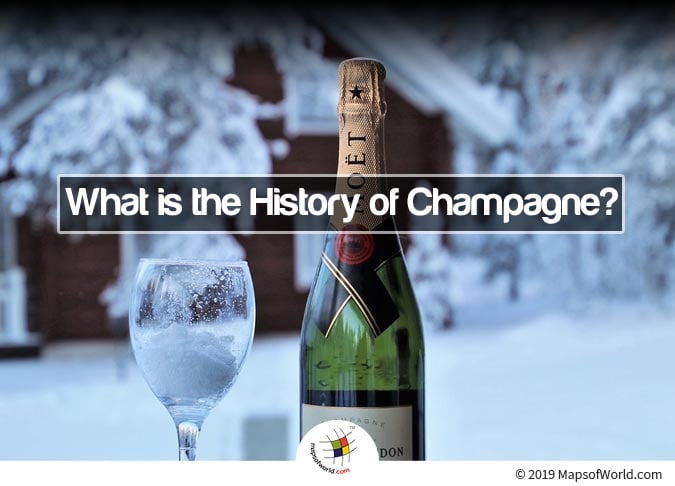

Champagne got the Royal Connection when Countess of Champagne Joan I Married King of France, Philip IV.
The first ever notion associated with champagne was of ‘experience with the stars’. The champagne was actually an accidental invention. In 1693, Benedictine monk Dom Perignon was trying to make wine but wasn’t able to get rid of bubbles. In order to know what was going wrong, he tasted it and quickly remarked “Come quickly! I am drinking the stars!”
Wine was considered sacred, even before the Middle Ages. Monasteries used to control the vineyards at that time. The Champagne began to be used in Consecration around 496 AD. A few centuries later, Champagne got the royal connection when Countess of Champagne Joan I married King of France, Philip IV.
All the kings in France from then on began to be crowned only in the effective capital of the Champagne’s province. From the year 898 AD, Champagne became a staple at coronation banquets. They were soon prized for their finesse and taste. One common practice was to offer Champagne to the region’s royal visitors. Mary Queen of Scots and Francis I once left with numerous casks of wine. Apparently, Louis XIV was also gifted with wine in several pints on his coronation that was organized in Reims.
In the 12th century, the popularity of wine crossed the national boundaries and became more famous in the coming years. Champagne wines got so popular by the 18th century that they got the honour of being the only wines that were served at big events like Fête de la Fédération.
Champagne also played a role in uniting European supremos at the Congress of Vienna. The conversation during the negotiations – which continued for nine months from September 1814 to June 1815 – was described as the ‘Wits that sparkled like Champagne itself’.
Champagne wines became the common drink to mark all the important celebrations and historic moments. They were used for toasting important treaties. As per the historical records, Queen Pomaré of Tahiti celebrated a new pagan temple’s consecration with a number of cases of Champagne.
Champagne wines became a staple at weddings and other ceremonial occasions since the 19th century. No event of great importance was enjoyed without Champagne. Even the important ships were christened with Champagne. The wine became more and more democratized from the 1870s onwards. This trend was started by Great Britain in the year 1843 and then later by France in the year 1960. Painters in the 20th century also portrayed this ‘magical’ drink on their canvases.
Champagne became irreplaceable in the show business as well. No Champagne, no show! Marlène Dietrich wrote about Champagne “It makes you feel like it’s Sunday and better days are just around the corner.” Greta Garbo found love for Champagne when she was filming for the film ‘Ninotchka’ in Paris. There have been reputed actresses who were a fan of the drink, namely, Marilyn Monroe, Juliette Binoche, Jeanne Moreau, and Audrey Hepburn.
The wine was used extensively at Shah of Iran’s celebrations, commemorating 25 centuries of Iranian monarchy in 1971, 200th anniversary of the French Revolution, and ’98 FIFA World Cup inauguration. The generous spraying of the drink on key events is popular.
Today, Champagne is a universal wine. Regardless of religion or race, people turn to this drink to celebrate their finest moments. Whether it’s Christmas or anniversaries, New Year’s Eve or birthdays, there has to be Champagne to mark the event.
Related Links:
The Republic of Madagascar is an island country located in the Indian Ocean, off the…
The Euro is the official currency of the European Union. It is, however, not incumbent…
There are many countries or regions that are partially recognized by the UN, have disputes…
The Alaska Statehood Act was signed into law by President Dwight D. Eisenhower in 1958,…
The name Persia may, however, only be used to refer to Iran in some contexts.…
Hawaii is an Island State in the US. It is one of the 50 states…